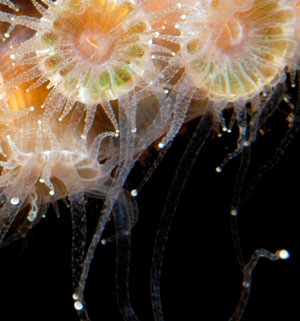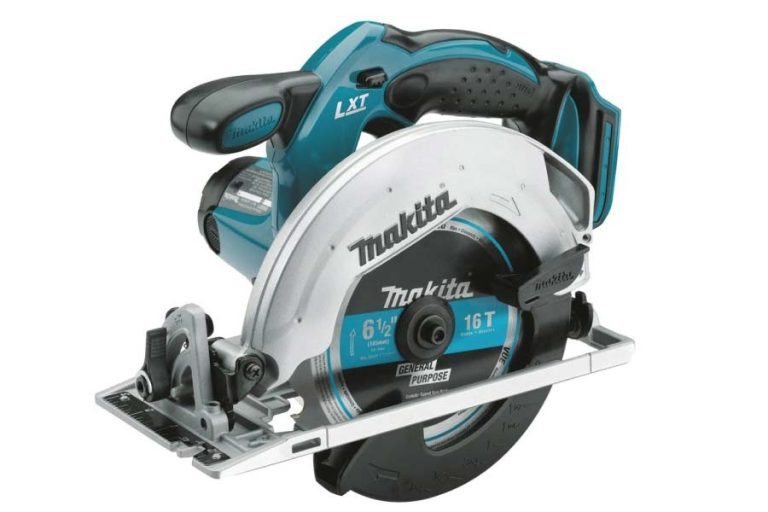What Do Coral Polyps Eat
Coral polyps are small, tube-shaped animals that live in colonies of many individuals. The coral polyp is the only visible part of the coral animal. The rest of the animal is a network of microscopic cells called cnidocytes that cover the skeleton.
Coral polyps extract food from the water passing by their tentacles. They consume algae, bacteria, zooplankton, and other small organisms.
How Corals Eat: Coral Polyps Feeding
Coral polyps are small, tube-shaped creatures that live in coral reefs. These little guys are actually the building blocks of coral reefs, and their diet is a big part of what helps them grow.
Most of the time, coral polyps feed on microscopic algae called phytoplankton.
They use their tentacles to sweep the water for food, and then they capture it with their mouths. This process is called filter feeding.
In addition to phytoplankton, coral polyps will also eat zooplankton (tiny animals), bits of detritus (dead plant or animal matter), and even other small organisms like bacteria.
Basically, if it’s small enough and floating by, a coral polyp will probably try to eat it!
All this eating is important for the growth of coral reefs. The reef provides a home for the polyps, and in return the polyps help to build up the reef with their bodies and waste products.
It’s a beautiful example of symbiosis!
What Do We Call a Community of Coral Polyps?
A community of coral polyps is also known as a coral reef. Coral reefs are underwater ecosystems that are home to a diverse community of plants and animals. Coral polyps are the foundation of the reef, and they provide food and shelter for the other residents.
Reefs can be found in tropical waters around the world, and they play an important role in the health of the ocean.
Coral reefs are under threat from a variety of environmental threats, including climate change, pollution, and overfishing. It is estimated that 50% of the world’s coral reefs have been lost in the last 30 years.
This is a serious problem because coral reefs provide critical habitat for many species of fish, invertebrates, and other marine life. They also protect coastlines from storms and erosion.
There is hope that coral reefs can be saved if we take action to reduce these threats.
We can start by reducing our own carbon footprints to help slow down climate change. We can also support organizations that are working to protect and restore coral reefs.
What is the Primary Food Source for Coral Reefs
Coral reefs are one of the most diverse and important ecosystems on Earth. They provide a home for 25% of all marine life, including fish, crabs, mollusks, and other invertebrates. Coral reefs also protect coastlines from storms and erosion.
The primary food source for coral reefs is zooplankton. Zooplankton are tiny animals that drift in the ocean currents. They are an important part of the food chain because they provide food for small fish, which in turn are eaten by larger fish.
Many species of zooplankton are only a few millimeters in size.
Coral reefs are also able to capture large amounts of phytoplankton, which are microscopic plants that drift in the ocean currents. Phytoplankton provides energy for coral through photosynthesis and also helps to remove carbon dioxide from the water.
This is important because it helps to regulate the pH levels of seawater and prevents it from becoming too acidic.
How Do Corals Reproduce
Coral reefs are some of the most diverse ecosystems in the world. They are home to over 25% of all marine species, including fish, invertebrates, and algae. Coral reefs are also an important source of food and income for humans.
Coral reefs are built by coral polyps. These small animals extract calcium from seawater to build their hard skeletons. Most coral polyps live in symbiotic relationships with algae called zooxanthellae.
The zooxanthellae provide the coral with food and oxygen through photosynthesis. In return, the coral provides shelter and nutrients to the algae.
Corals can reproduce both sexually and asexually.
Asexual reproduction happens when a piece of coral breaks off and grows into a new colony. This is how most corals grow. Sexual reproduction occurs when male and female corals release eggs and sperm into the water during mass spawning events.
The eggs fuse together to form larvae which settle on the reef and grow into new corals.
Coral bleaching is a major threat to coral reefs around the world. Bleaching occurs when Zooxanthellae are expelled from the coral due to stress (usually caused by warm water temperatures).
Without its main food source, the coral begins to starve and turn white. Bleached corals are more susceptible to disease and death.
Are All Corals Colonial
Corals are marine invertebrates within the class Anthozoa that are characterized by a hard skeleton composed of calcium carbonate. A coral colony can be either a single organism or composed of many individual polyps. Polyps are cylindrical in shape and have tentacles surrounding their mouths which they use to capture prey.
Most corals obtain the majority of their energy through symbiotic relationships with microscopic algae called zooxanthellae that live within their tissues and provide them with nutrients through photosynthesis.
All corals are colonial meaning they consist of many genetically identical individuals called polyps that are connected to each other and share a common tissue layer. Coral colonies can range in size from less than an inch to over six feet in diameter.
The largest coral colony in the world is Great Barrier Reef which is composed of over 2,900 individual reefs and 900 islands!
Do Corals Eat Zooplankton
Do Corals Eat Zooplankton?
Corals are beautiful, but often misunderstood creatures. A common misconception is that corals are plants.
In fact, corals are animals! And like all animals, they need to eat to survive. So what do corals eat?
Well, one of their favorite foods is zooplankton.
Zooplankton are tiny aquatic creatures that drift along with the currents. They include things like microscopic crustaceans and planktonic larvae.
Most zooplankton are too small to be seen with the naked eye. But even though they’re tiny, they’re an important food source for many marine animals, including corals.
Corals have several methods of capturing their prey.
Some species extend long tentacles into the water to snag unsuspecting zooplankton. Others trap them in mucus nets that they produce. Once captured, the zooplankton are brought towards the coral’s mouth where they’re consumed.
In addition to providing food, zooplankton also play an important role in coral reproduction. Many species of coral release their eggs and sperm into the water where it mixes with planktonic larvae.
What Eats Zooxanthellae in the Coral Reef
If you’ve ever wondered what zooxanthellae are, and why they’re important to coral reefs, you’re not alone. Zooxanthellae are single-celled algae that live inside the tissue of corals. They provide food for the coral through photosynthesis and give the coral its characteristic coloration.
But what eats zooxanthellae?
There are a few different types of animals that feed on zooxanthellae. One is the saponin-producing sea slug.
These slugs secrete a toxin that breaks down the cell walls of the algae, allowing them to digest the contents. Another is the zooplankton known as copepods. These tiny crustaceans graze on algal cells, including zooxanthellae.
But by far the most voracious consumers of zooxanthellae are marine snails known as pyrazoids. These predators can strip a coral reef of its algal cover in just a few days! Pyrazoids use their radula (a tongue-like organ) to scrape away at the tissue of their prey, consuming both the animal and plant cells within.
While it’s interesting to know what eats zooxanthellae, it’s even more important to understand why these animals play such an important role in coral reefs. By grazing on algae, these animals help to keep corals clean and free from overgrowth. This allows light and water to flow freely through the reef, providing ideal conditions for corals to grow and thrive.
Does Coral Eat Algae
Coral reefs are some of the most biodiverse ecosystems on Earth. They provide critical habitat for a wide variety of marine life, including fish, invertebrates, and algae. But what do coral reefs actually eat?
It turns out that coral reefs are mostly supported by two things: zooplankton and algae. Zooplankton are tiny floating animals that drift through the water column. Many of them are too small to be seen with the naked eye.
Algae are plant-like organisms that can range in size from microscopic to several feet long.
Coral reefs primarily feed on zooplankton at night. During the day, they filter out particulates from the water column using their tentacles.
These particles include bits of algae, bacteria, and other organic matter. The coral reef then uses these particles as food or energy sources.
Algae are also an important part of the coral reef ecosystem.
Some species of algae live symbiotically with coral, providing them with essential nutrients like nitrogen and phosphorus. Other species of algae compete with coral for space and resources.
What Does Coral Eat in Aquariums
Coral in aquariums is generally considered to be a peaceful community member. But what does coral eat? In the wild, coral reefs provide a home for many different types of fish, invertebrates, and other marine life.
The coral itself is actually a predator, feeding on small planktonic organisms that drift by in the currents.
In an aquarium setting, it can be tricky to replicate the natural diet of coral. Plankton are not always easy to come by!
However, there are some commercial foods available that will provide your coral with the nutrients it needs. These include things like live phytoplankton cultures and frozen mysis shrimp.
It’s important to remember that every type of coral has different dietary requirements.
Some corals are more delicate than others and need to be fed very carefully. Others are more robust and can handle a wider variety of foods. Be sure to do your research before adding any new corals to your tank!

Credit: www.youtube.com
What is a Corals Diet?
Coral reefs are some of the most diverse ecosystems in the world. They are home to thousands of different species of fish, invertebrates, and plants. Corals are a key part of this ecosystem and their diet is an important part of how they function.
Corals are filter feeders. This means that they strain food out of the water around them using specialized cells called cilia. The main food sources for corals are microscopic algae known as phytoplankton and zooplankton (tiny animals).
These organisms provide the coral with energy in the form of sugars and lipids. In return, the coral provides shelter and nutrients to the algae which helps them to grow. This symbiotic relationship is essential for a healthy reef ecosystem.
While phytoplankton and zooplankton make up the bulk of a coral’s diet, they also consume other small organisms such as bacteria, protozoans, and small crustaceans. In order to get enough food, corals must filter large volumes of water – up to 50 gallons per day!
What Eats Coral Polyps in the Coral Reef?
Coral polyps are tiny, soft-bodied creatures that live in colonies of many individuals. These creatures are related to anemones and jellyfish and have a simple digestive system with a mouth and one opening for both food intake and waste removal. Coral polyps extract nutrients from the water around them using their tentacles.
They also use their tentacles to capture small prey items such as zooplankton.
While coral polyps can capture small prey items, they are also commonly eaten by a variety of larger predators. Fish such as parrotfish, surgeonfish, and angelfish often feed on coral polyps.
These fish use their sharp teeth to scrape the coral polyp tissue from the calcium carbonate skeleton that the polyp lives on. Other animals that eat coral polyps include sea urchins, crabs, snails, starfish, and some species of flatworm.
While predation is a natural process that helps to control populations of coral polyps, humans can also impact the number of these creatures through activities such as fishing and pollution.
Overfishing can remove predators from an ecosystem which can lead to an increase in the number of coral polyps. Pollution can also negatively impact coralpolyp populations by decreasing water quality or introducing new chemicals into the environment.
Do Coral Polyps Share Food?
Coral polyps are small, sedentary animals that live in colonies and extract food from the water passing by them using their tentacles. The food they consume consists of microscopic algae, zooplankton, and other tiny organisms. While coral polyps do not share food with each other directly, they do cooperate in order to obtain food.
Each coral polyp has a sweeper tentacle that it uses to capture prey and bring it towards the mouth. Other members of the colony then use their own tentacles to grab the prey and consume it. This cooperative feeding behavior ensures that all members of the colony have enough to eat.
What Food is Eaten in a Coral Reef?
A coral reef is a type of marine ecosystem that is home to a wide variety of aquatic life. The food that is eaten in a coral reef can vary depending on the specific location and the types of creatures that live there. Some common examples include fish, crustaceans, mollusks, and seaweed.
In general, fish are the primary source of food for most animals living in a coral reef. This is because they are relatively easy to catch and provide a good source of protein. Crustaceans such as crabs and shrimp are also popular options, while mollusks like squid and octopus are less common but still eaten by some species.
Seaweed is not typically considered to be food by most animals living in a coral reef, but it does play an important role in the ecosystem by providing shelter and nutrients for other organisms.
Conclusion
Coral polyps are small, soft-bodied organisms that live in colonies of many individuals. The coral reef is built by the calcium carbonate skeletons of these creatures. Polyps extend their tentacles at night to feed on plankton and other small marine life.






